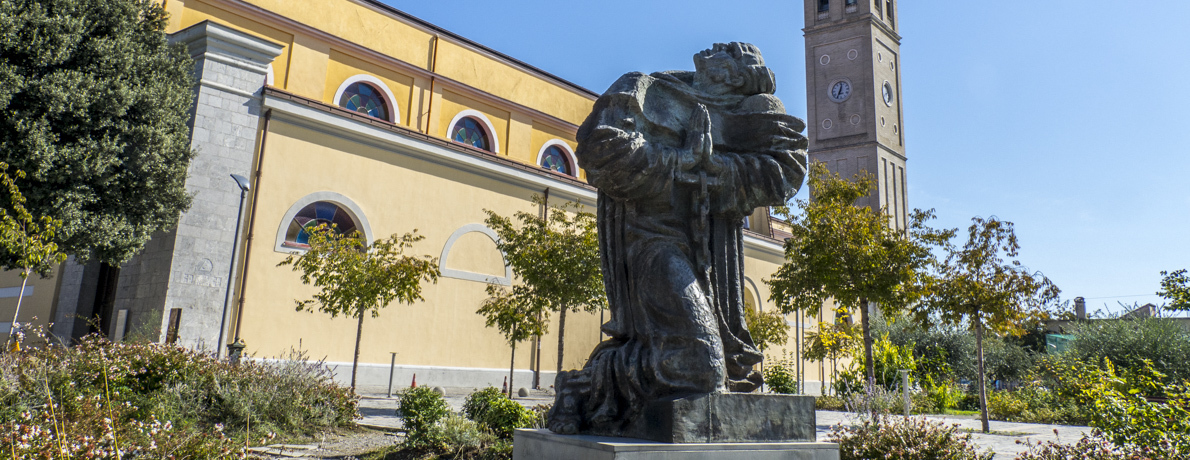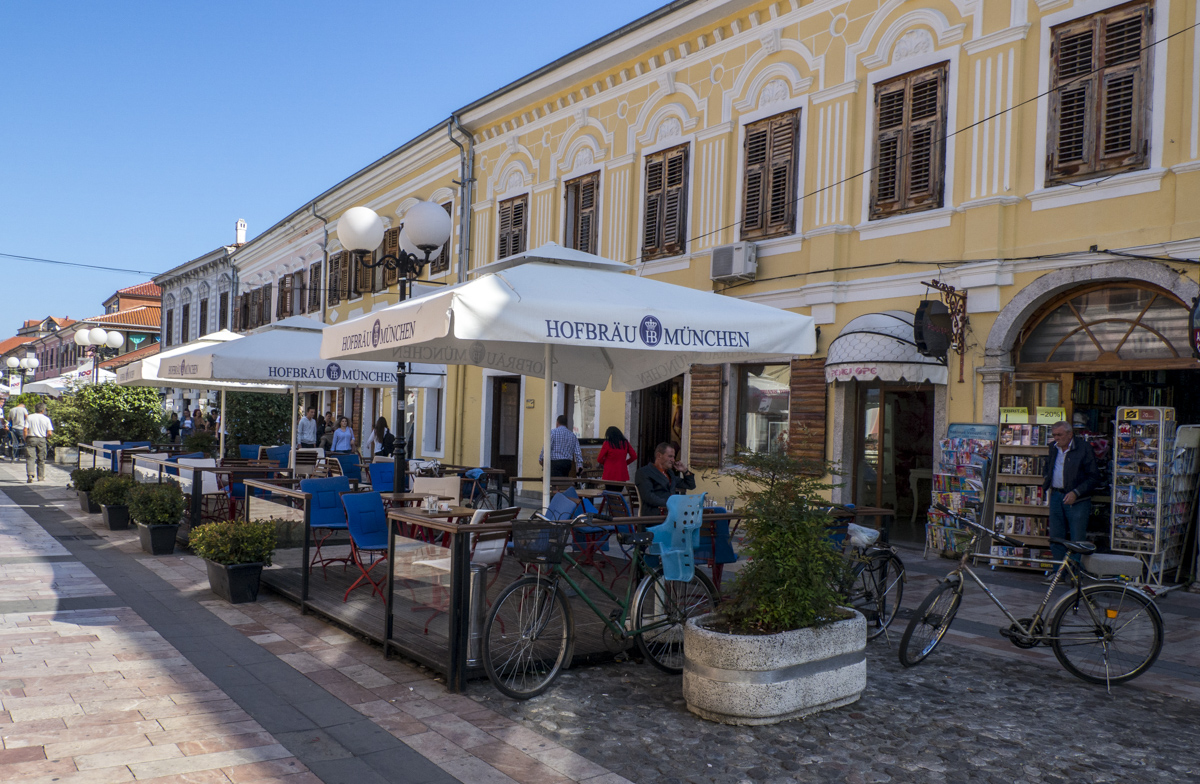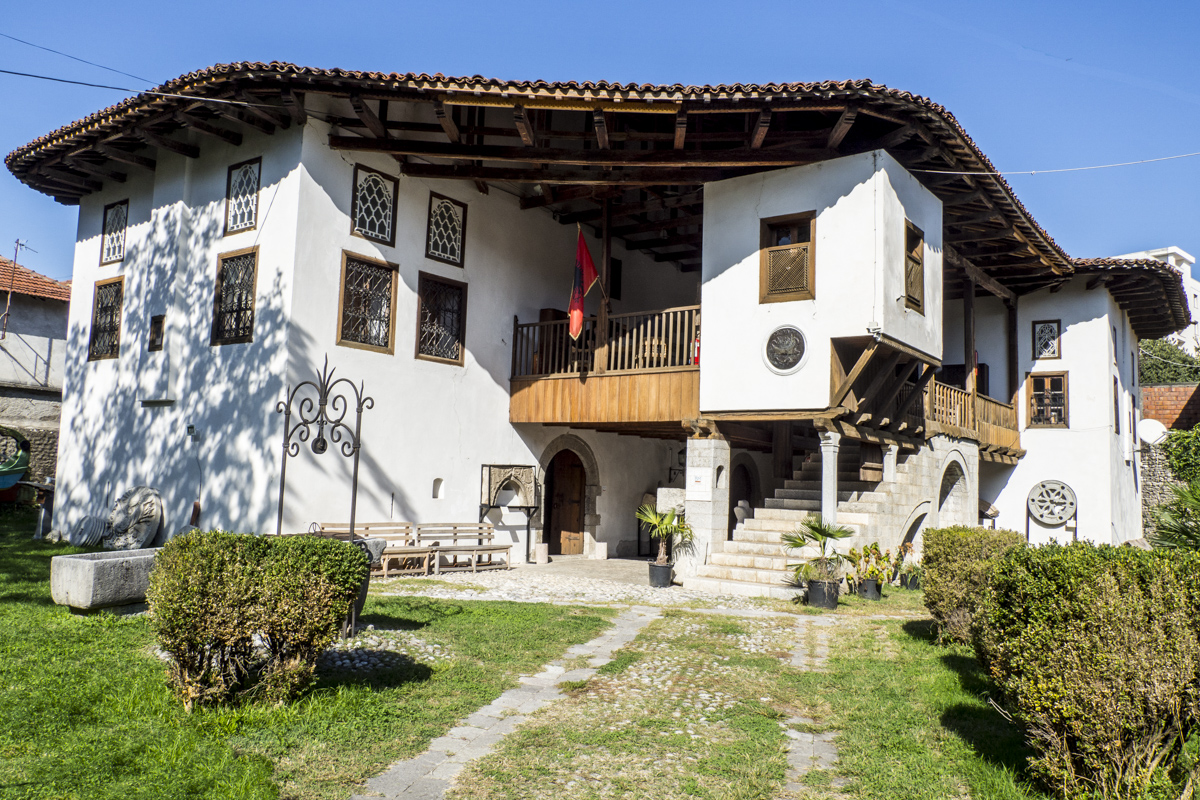
Albania is fast emerging from its austere and secret past and becoming an alluring destination featuring some fascinating towns like Shkodër or Shkodra one of the most ancient cities in the Balkans.
Shkodër is situated in northern Albania and it is one of the oldest cities in this country. It sprawls across the Mbishkodra plain between the fresh water marshlands of Lake Skadar and the foothills of the Albanian Alps. These mountains may not be the highest in the world but they are among the most scenic thanks to their composition of limestone and dolomite rocks. The town is surrounded by three rivers; the Drini, Buna, and Kiri. Throughout its history it has been occupied several times. First it was the Romans and then the Serbians, the Venetians and finally the Ottomans before it was returned to Albania. Today it bears the mark of each of these different occupations from Rozafa Castle above the town to the Ottoman buildings in its old town. It is also renowned as the centre of the Roman Catholicism in Albania and I started my visit at Shkodër Cathedral, the Cathedral of Saint Stephen.

The Cathedral of Saint Stephen in Shkodër in Albania
Saint Stephen is the patron saint of the city of Shkodër. Originally, the Cathedral of Saint Stephen was inside the walls of the Rozafa Castle that has loomed above the town since Roman times. Following the Ottoman invasion of the city in 1478 the cathedral became a mosque. In 1852 that the catholic community made a request to the Sultan for a cathedral and construction of the cathedral began in 1858. During the Communist regime (1944 – 1990) the cathedral was used as a Palace of Sports which no doubt accounts for its survival today. Following the collapse of Communism, the catholic community reclaimed their cathedral. Today it stands proud in the heart of the city in an area known as Saint John Paul II Square.

The name of the square commemorates the blessing of the cathedral by Pope John Paul II in 1993. Close to the cathedral is the Diocesan Museum, the only one in Albania dedicated to religion. Probably because Albania was the first to declare itself to be an atheist country. This museum includes written testimonies, church objects and photographs relating to the history of Catholicism in Albania. Also in this square is a Memorial to the Martyrs, a tortured sculpture. Albania was one of the earliest European countries to experience Christianity and it has a long, diverse history relating to this religion. Shkodër itself boasts the largest number of martyred clergy who sacrificed their lives for the freedom of religion. This memorial is dedicated to three Jesuit martyrs of the Communist era in Albania.

The interior of this magnificent building features a beautiful wooden ceiling and a large portrait of Mother Teresa who was born in Albania. Although she was not born in Shkodër itself the town, a catholic stronghold, is proud to celebrate her achievements. She described herself as follows: By blood, I am Albanian. By citizenship, an Indian. By faith, I am a Catholic nun. Mother Teresa, probably the best known Albanian and truly a saint is also celebrated by an intriguing statue in the town centre. This is on the far side of the old town where I made my way next.

The Promenade of Shkodër in Albania
The popular Promenade of Shkodër is officially named Rruga Kolë Idromeno and referred to locally as Sheshi. Paved with decorated cobblestones and lined with architectural delights it is one of the highlights of Shkodër. It was renovated during the early twentieth century according to the design of the Albanian artist Kole Idromeno and subsequently named after him. This harmonious representation of the architecture of bygone days and more modern styles reflects his love of Venice. Traditional Venetian architectural styles are prevalent in the buildings on either side of this wide street. These buildings are now occupied by shops, bars and cafés. Seating areas for the latter straddle the space in the middle of this street. Street artists are a feature of this attractive, but short street. Half way along it is the unusual and fascinating Marubi National Museum of Photography.

The Marubi National Museum of Photography in Shkodër in Albania
The Marubi National Museum of Photography includes and extensive collection of negatives mounted on glass plates. The collections are arranged in chronological order and includes the first photograph ever taken of Albania in 1858. Pietro Marubi, an Italian political exile opened a photographic studio in Shkodër and dedicated the next forty years to taking photographs of all things Albanian including architecture, cultural events and daily life. He was also the first person to take photographs of numerous symptoms of diseases that were relatively unknown during his lifetime. and medicine. When he died his studio was inherited by one of his Albanian students and his children inherited the studio from him thereby creating the famous Marubi dynasty. Originally displayed in the Marubi photographic studio this huge collection of photographs is now on display at the Marubi National Museum of Photography which also features temporary exhibitions. Just beyond this museum the promenade ends alongside the impressive Grand Mosque.

The Grand Mosque in Shkodër in Albania
The Grand Mosque also known as the Ebu Bekr Mosque and officially named Sheik Zamil Abdullah Al -Zamil Mosque is the focal point of the local Muslim community in Shkodër. It was built on the site of an old Ottoman Mosque in 1995 using funds from Saudi Arabia and Egypt. Extensively renovated in 2008 its extravagant exterior belies a simple interior. This mosque is one of two splendid modern religious the buildings in the city – the other, the Orthodox Cathedral of the Nativity of Christ is nearby.

The Orthodox Cathedral in Shkodër in Albania
The extraordinary Orthodox Cathedral of the Nativity of Christ was built in the twenty-first century. It is the third orthodox cathedral to occupy this site. The previous ones were both destroyed. As in many major Albanian cities the three main traditional faiths of the country, Catholic, Muslim and Orthodox site their main churches close together. This Orthodox Cathedral with its tall bell tower is one of the most beautiful modern churches in Albania. Although entrance to the cathedral is free a donation towards a children’s charity is expected. Entrance to the church is free but a certain donation towards children is expected. Nearby is the older Franciscan Church.

The Franciscan Church of Shkodër in Albania
Following the issue of a Sultan degree permitting the construction of a Franciscan Church in Shkodër in 1902 the building was completed in 1905. During the communist regime the church was used by the Sigurimi (Albanian Secret Police) as a store for arms and ammunition. When the Franciscan priests protested they were arrested and the church was closed until 1990 when Albania gained its freedom. Many of the religious martyrs during the Communist regime were Franciscan priests and were amongst the beatified Albanian martyrs. The former Franciscan College in Shkodër witnessed large scale torture and executions and was used as one of many communist prisons in the city. The college is now a museum, the Site of Witness and Memory museum commemorating those who suffered during the Communist Regime. The Historical Museum of Shkodër concentrates on a more peaceful period when Shkodër was part of the Ottoman Empire.

The Historical Museum of Shkodër in Albania
The Historical Museum of Shkodër is located in the villa of an Ottoman merchant. This traditional house is one of very few still existing in Shkodër. The ground floor is occupied by a small archaeology exhibition. The first floor features typically ornate guest rooms of the period laid out as they would have been to entertain visitors and featuring traditional Albanian clothes. More information on the history of Shkodër can be found in the museum inside the legendary Rozafa Castle. This, the oldest building in the area stands above the town at the far end of a steep cobbled street about three kilometres from the city centre. It can be reached on foot, by bike, in a taxi or by public transport although the latter can be very unreliable. As a lover of old buildings my final quest was to find the genuine old town.

The Old Town of Shkodër in Albania
The old town of Shkodër is an eclectic mixture of different architectural styles in varying states of repair and disrepair. I found some old stone houses on Rfuga G’juhadol behind the promenade. Some of these old buildings have been renovated and now serve as shops and workshops for the local community. Sadly, others have simple been left to decay.

Where to Eat in Shkodër in Albania
Sofra Restaurant is right in the middle of the Shkodër Promenade with tables set in the street. This restaurant is particularly well-known for its varied menu featuring traditional dishes at very reasonable prices. A real favourite is tavë kosi, a lamb and rice dish baked with yoghurt and eggs. Enjoy.
Where to Stay
When I visited Shkodër I was staying in near Budva in Montenegro at the lovely Falkensteiner Hotel. This hotel is situated above Bečići Beach one of the most well-known beaches on the Budva Riviera. It is ideally situated for day trips into Albania.

How to get to Shkodër in Albania
Several airlines including British Airways operate regular flights to Tirana there are regular buses and trains from Tirana to Shkodër.
Available on GPSmyCity.com
This article is now featured on GPSmyCity. To download this article for offline reading or travel directions to the attractions highlighted in this article, go to Walking Tours in Shkodër on GPSmyCity
This article is based on the personal experience of Valery, an ExperiencedTraveller.